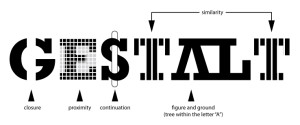Everyone has had a long list of to dos or personal things to take care of. Looking at the whole it can seem a little overwhelming and most of us get lost, depressed, or even frustrated. Using a means-end analysis is basically looking at a goal, starting point, and the best way to get from point A to point B by breaking down the list or problems to make them more doable in our lives (Newell & Simon, 1972). For this blog, I will pass on some tips on how to manage your homework load that you have each semester to lessen the stress. Keeping in mind, that these tips have worked for me but can be modified to individual needs, because let’s face it, each of us have different lifestyles and means-end analysis will not necessarily work for everyone problem.
Each of us when we start a new semester, whether it is at a new school or the current one, can feel overwhelmed by the work load that looms ahead of us. What I do to lessen the stress is I take each class syllabus and course calendar and a full size desk top calendar, the ones with the large squares for the dates, and I write down the class and what is due each week including test and quizzes. This way I can see clearly what I have to complete. This is the process of setting subgoals which helps to move toward the overall goal of course completion (Goldstein, 2011). Once classes are taken care of I will then insert any social or work related items. With all of this in place I have a black and white picture of my life each month. Once this is in place I can set up a realistic schedule to complete the semester and how it is broken down weekly, allows me to manage it properly without over stressing out. I take one day at a time. As each day passes you can cross out what has been completed and feel a sense of accomplishment.
Now we move into supplies to fulfill the semester. I will look at each class and see if any will need something other than the usual, such as art supplies, software, etc. Take a list to your local store and remember it is ok to over buy on paper, printer ink, and writing tools because you never can estimate what you might use up. I find that having all the items for each class available will help keep stress levels down by not having to run to the store at the last minute. Being well stocked will help prepare for the semester.
Next, let’s look at textbooks. Most of us will buy them and throw them in the back of our cars. The best thing to do is to look them over, read the index, and maybe a few chapters to get acclimated to the class. I use colored tabs to mark out each chapter, so I can easily flip to it. Being familiar with the classes you are taking and what is required in readings, online work, extra supplies, etc. will help you plan your weeks to come plus lower your stress levels.
Now the important thing is your study area. Some people will study in their bedroom, but this is too tempting of a place to take a nap or simply fall asleep and then your day is over. If all you have is your bedroom then I would suggest going to the school library or a quiet area in a coffee shop or 24 hour restaurant. I have a desk in a room with little to no distractions. I have everything I need in this room to complete my homework, readings, and school projects. I have set times to do my school work according to my calendar that I discussed earlier. Another thing that might help is turn off cell phones and any other communication or social media devices. Let people know that you will be studying at set times so that they will not text or call to disturb you. These types of disruptions can derail you from what you are reading or writing. If you have children, you can do what a friend of mine does and put a sign on the door letting your children know that it is mommy/daddy study time. Of course this doesn’t always work because children are children and that just doesn’t happen. In that case, perhaps work it out with your partner that they handle the kids while you are studying or have a friend or relative watch the children for that bit of time. Having a place to work just for you will increase productivity and or course lower some stress.
With some of the tips I have given, you can lower stress levels of the new semester by setting smaller goals so you can reach the finish line at the end of the semester. This is all made possible by using a means-end analysis solution. Keep in mind this may not work for you or you may have to modify the ideas that I have given to make it work in your life. Whatever will work by planning out your semester so you can achieve the grades is great. I hope you will be able to add some of or all of my tips to get you to your semester goals by breaking down the whole to more manageable pieces.
References
Goldstein, E. (2011). Cognitive psychology: Connecting mind, research, and everyday experience (3rd ed.). Australia: Wadsworth Cengage Learning.
Newell, A., & Simon, H. A. (1972). Human problem solving (Vol. 104, No. 9). Englewood Cliffs, NJ: Prentice-Hall.



